Broughton built Lancaster to mark Dambusters 80th anniversary with commemorative flight today
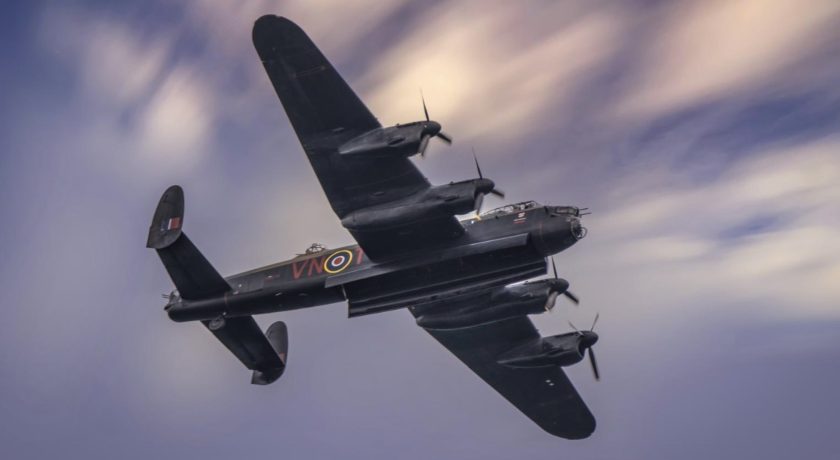
In honour of the 80th anniversary of the daring Dambusters raid, the Broughton-built Britain Memorial Flight (BBMF) Lancaster Bomber will fly past 28 ex-Bomber Command bases today.
The historic aircraft, one of only two airworthy Lancasters left worldwide, serves as a flying testament to British resilience and ingenuity during the Second World War.
The Dambusters, codenamed Operation Chastise, is one of the Royal Air Force’s most famous missions and helped turned the tide of the Second World War.
On the night of 16-17 May 1943, nineteen Lancaster bombers took off from RAF Scampton, Lincolnshire loaded with damn breaching drum-shaped “bouncing bombs”
The aircraft, part of the legendary 617 Squadron, embarked on the daring mission to destroy dams in the industrial stronghold of Nazi Germany and disrupt critical supply chains in the Ruhr Valley.
In commemoration of this audacious mission’s anniversary, a Broughton-built Lancaster bomber from the RAF’s Battle of Britain Memorial Flight (BBMF) will grace the skies over all Bomber Command bases in Lincolnshire.
Throughout the years 1936-1968, Bomber Command oversaw the UK’s bomber force.
The BBMF Lancaster, identified as PA474, was constructed at the Vickers Armstrong Broughton factory at Hawarden Airfield, in 1945.
It was built in anticipation of deployment against Japan as part of the ‘Tiger Force’, but the end of the war in the Far East prevented this course of action.
Thus began a storied journey for the aircraft that was built just after the war in Europe had ended.
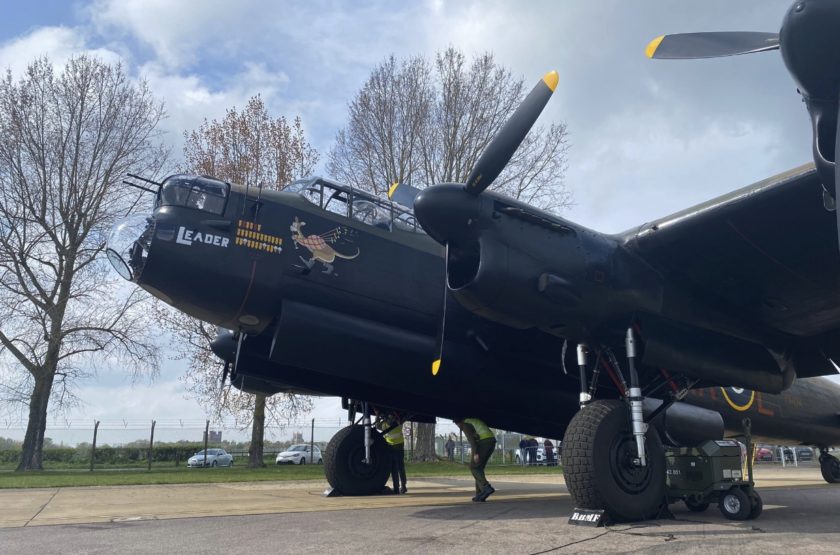
Photo: Flt Lt Chris Sale/BBMF Twitter
From being prepared for use as a pilotless drone, to its eventual reprieve and transfer to the Royal College of Aeronautics for testing of experimental aerofoil sections, PA474 has undergone various transformations.
It even graced the silver screen, featuring in films such as ‘Operation Crossbow’ and ‘The Guns of Navarone’.
After narrowly escaping a fate as a static museum exhibit, the Lancaster was transferred to the care of 44 Squadron in 1965.
A dedicated restoration programme began, and by 1967, permission was granted for PA474 to take to the skies regularly while restoration continued. In 1973, it was transferred to the Battle of Britain Memorial Flight, where it remains to this day as a living tribute to British aviation history.
Squadron Leader Mark Sugden, Officer Commanding the BBMF said: “The Dambusters raid was one of the most audacious raids in the history of the Royal Air Force, and we at the Battle of Britain Memorial Flight are proud to commemorate the bravery, dedication and sacrifice of all those involved.”
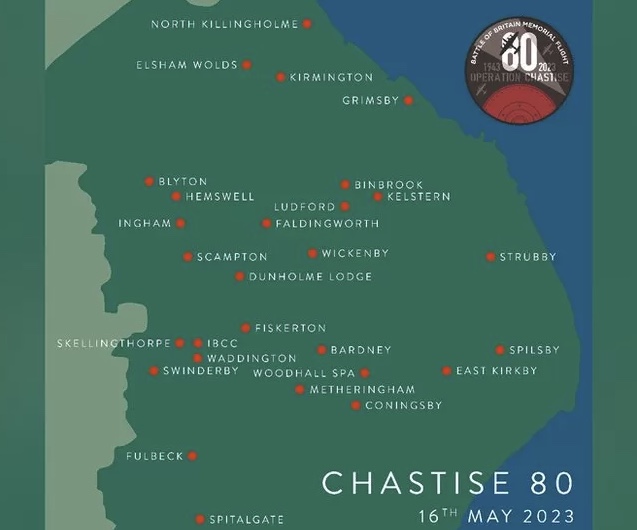
The mission
On the night of 16-17 May 1943, 617 Squadron of the Royal Air Force, led by Wing Commander Guy Gibson, embarked on a daring mission, codenamed Operation ‘Chastise’.
Their aim was to obliterate three heavily fortified dams in Germany’s Ruhr valley, an industrial hub critical to the enemy war effort.
Their secret weapon was a ‘bouncing bomb’, a brainchild of British engineer Barnes Wallis.
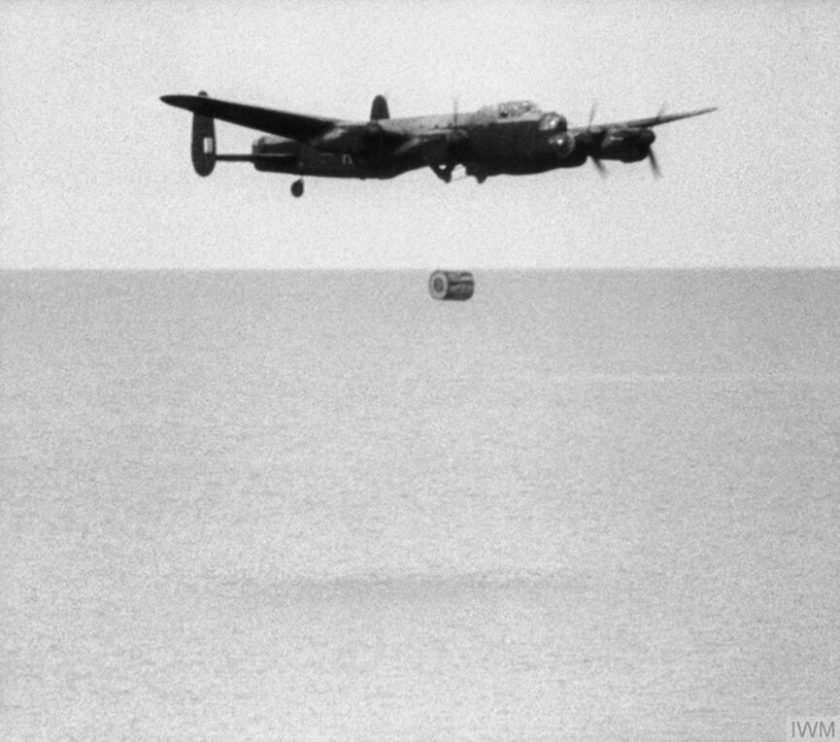
The drum-shaped bomb (codenamed ‘Upkeep’) needed to be dropped from a height of 60 feet (18m), and at a ground speed of 232mph. The bomb would spin backwards across the surface of the water before reaching the dam. Its residual spin would then drive the bomb down the wall of the dam before exploding at its base. (© IWM (IWM FLM 2340)
Wallis initially experimented with the bomb concept in his garden, observing marbles skipping across a tub of water.
The final ‘Upkeep’ bomb design was drum-shaped, designed to bounce over torpedo nets, roll down the dam wall due to its residual spin, and explode at its base, causing substantial damage.
To deliver this innovative weapon, Lancaster bombers were specially modified, and a new squadron, initially named Squadron X, was formed.

In 1942 British engineer Barnes Wallis began working on plans for a bomb that could skip across water. He developed the idea by experimenting with bouncing marbles across a water tub in his back garden. (© IWM (HU 92132))
Comprising aircrew from Britain, Canada, Australia, New Zealand, and the USA, this squadron underwent rigorous training in low-level night flying and navigation under Gibson’s leadership.
The Möhne, Eder, and Sorpe dams were the primary targets.
The curved gravity dams of Möhne and Eder, despite being surrounded by tree-covered hills, were vulnerable to attack, while the Sorpe dam, with its watertight concrete core, presented a formidable challenge.
On the night of the operation, three waves of 19 Lancasters, carrying 133 aircrew, took off. Gibson’s aircraft led the attack, breaching the Möhne dam after five attempts.
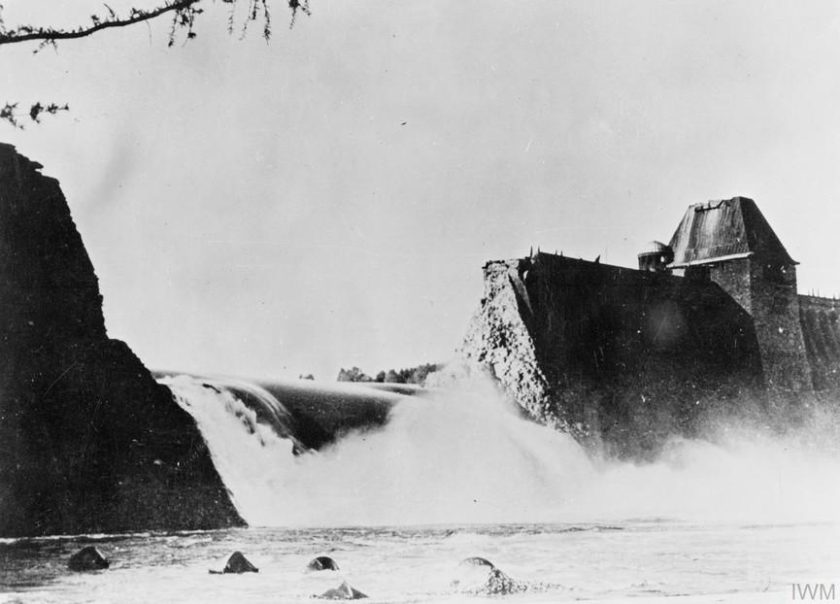
The breached Möhne dam © IWM
The remaining bombers turned their attention to the Eder dam, which collapsed at 1.52 am. Despite concerted efforts, the Sorpe dam remained intact.
The operation resulted in the loss of 53 aircrew and the capture of three. On the ground, the floods caused by the dam breaches led to approximately 1,300 casualties.
Despite the limited impact on industrial production, the successful operation provided a significant morale boost to the British public during the grim days of war.
Flypast
The timings for the Lincolnshire fly overs are as follows;
Spitalgate, Lincolnshire, NG31 9EW – 18:58
Fulbeck, Lincolnshire, NG32 3JE – 19:02
Swinderby, Lincolnshire, LN6 9US – 19:04
RAF Waddington, Lincolnshire, LN5 9NB – 19:07
Lincoln- IBCC, Lincolnshire, LN4 2HQ – 19:08
Skellingthorpe, Lincolnshire, LN6 0HX – 19:12
Scampton, Lincolnshire, LN1 2TH – 19:15
Dunholme, Lincolnshire, LN2 3QF – 19:16
Wickenby, Lincolnshire, LN3 5AX – 19:18
Faldingworth, Lincolnshire, LN8 3NW – 19:19
Ingham, Lincolnshire, DN21 5BU – 19:21
Hemswell Cliff, Lincolnshire, DN21 5TY – 19:22
Blyton, Lincolnshire, DN21 3PE – 19:24
Elsham Wolds, Lincolnshire, DN20 0NT – 19:30
Kirmington, Lincolnshire, DN39 6YH/DN39 6YW – 19:31
North Killingholme, Lincolnshire, DN40 3JL – 19:32
Grimsby, Lincolnshire, DN36 4RX – 19:37
Binbrook, Lincolnshire, LN8 6EG – 19:39
Ludford, Lincolnshire, LN8 6AD – 19:41
Kelstern, Lincolnshire, LN11 0RQ – 19:42
Strubby, Lincolnshire, LN13 0LN – 19:47
Spilsby, Lincolnshire, PE24 5BD – 19:51
East Kirkby, Lincolnshire, PE23 4DE – 19:53
Bardney, Lincolnshire, LN3 5TZ – 19:58
Fiskerton, Lincolnshire, LN3 4EZ – 20:00
Metheringham, Lincolnshire, LN4 3RD – 20:03
Woodhall Spa, Lincolnshire, LN10 6QG – 20:05
RAF Coningsby, Lincolnshire, LN4 4SY – 20:07
The plans to commemorate the anniversary will be subject to weather and serviceability caveats due to the nature of operating historic aircraft, and the timings published may be subject to change.
[Main photo: Cpl Pete Farrington]
Spotted something? Got a story? Email: [email protected]
Latest News
